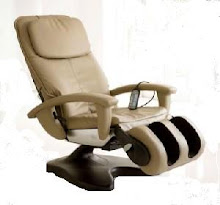As previous posts have pointed out there are many different bed designs and mattress materials and fillers and all have a place depending on individual requirements and budgets.
This time I will make some observations and comments on adjustable beds and therapeutic beds, both of which are used in the medical and care sectors as well as in the home. These tend to be beds for dependency patients, people who spend prolonged periods of time in bed, or people who are recovering from an accident, injury, or procedure and for whom rest is critical to their recovery.
Therapeutic beds are usually beds based around wellbeing and providing the best possible support to the resting body, or beds intended to offer some kind of direct therapy like massage. A bed termed a “therapy bed” is more usually a bed from which a manual therapy is delivered by a practitioner and this is normally differentiated as being dissimilar to a therapeutic bed.
So what can you expect from a therapeutic bed? Well just about anything as the description is pretty open ended.
Many therapeutic bed types have memory foam mattresses and they may have some kind of frame based adjustment, often to enable the raising or lowering of the bed, or even to enable the incline of the backrest to be varied. This option may also apply to the leg support part of the bed and mattress. These adjustments can be electric or manually powered.
More exotic features can include embedded heaters to warm up the mattress and bedding and even special motors that can simulate a massage. Some massage features even allow the selection from a number of different massage techniques and timers allow the massage period to be preset.
High dependency beds tend to move away from the “luxury” features bed to a more practical bed design. These beds take into account the fact that a carer may be working with a patient and need constant access to all parts of the bed area. These beds focus on height adjustment to enable patient comfort, movement and ingress at a suitable level.

A further type of therapeutic bed, and one that is rapidly increasing in popularity and demand, is the bariatric bed (an oversized heavy duty bed). Bariatric beds are special bed and mattress combinations that have been developed for very large and heavy people. These people are often referred to as obese, however in the medical profession they are part of an area of medical care called bariatrics. Bariatrics looks at the care, treatment and aids that can be used to make the life of very overweight people easier, healthier and more like that of normal sized individuals. Methods include treatments and procedures, diet and exercise advice and the provision of assistive aids and furniture of which the bariatric bed is one example.
Further reading on these wellbeing and care focussed beds can be found by using the links provided in the text. There is a considerable amount of information covering all of the variations of orthopedic, therapeutic and body supporting beds accessible from these pages.
Finally, if you have not given serious thought to the health of your back and how your body recovers and regenerates during the night, you should. If you do you will discover that good sleep, aided by a good bed and mattress, is critical to a long and healthy life.
